| Image | Product | Price |
|---|---|---|
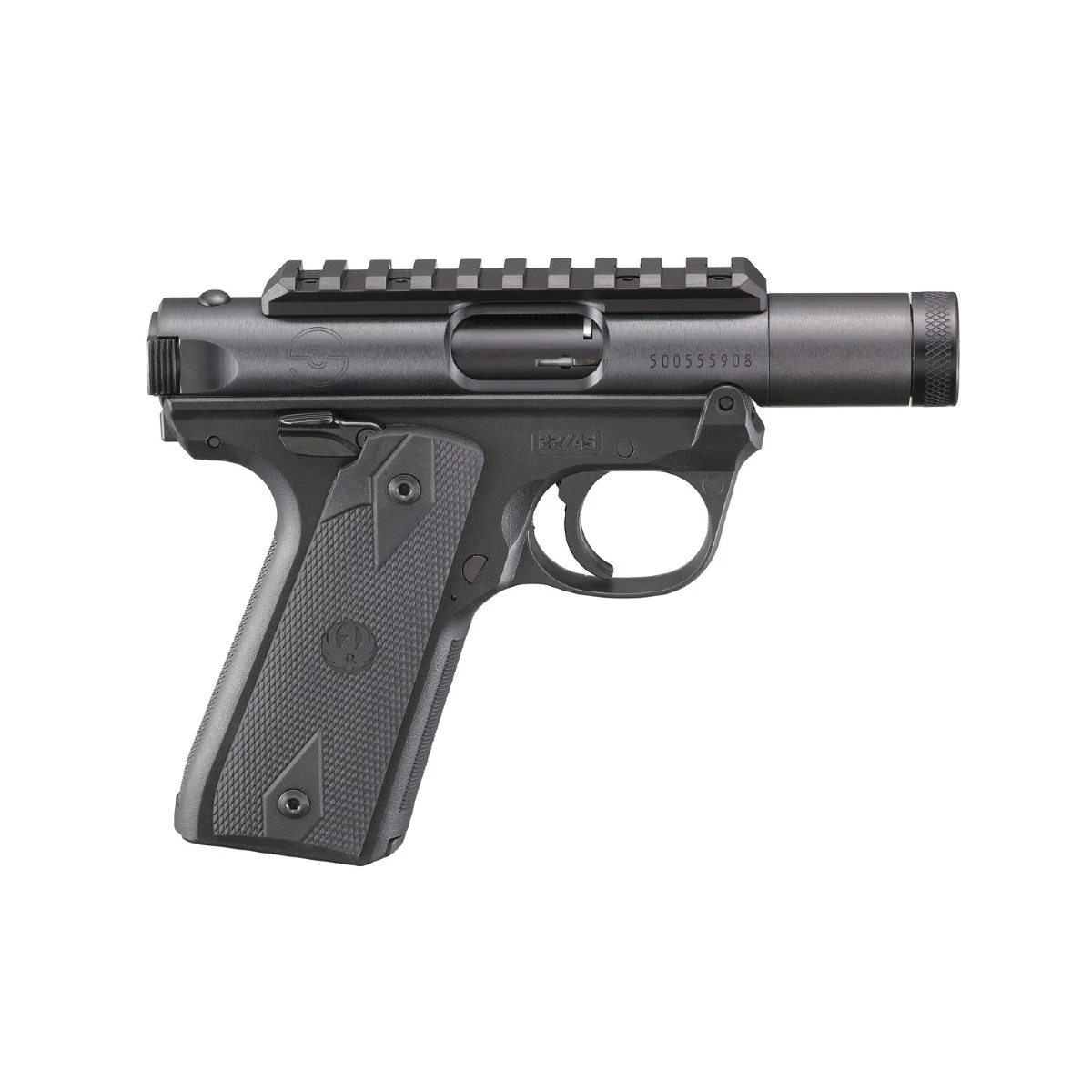 | Check Price |
As we’ve reviewed no shortage of Ruger Mark-series guns, including the Mark IV 22/45 Lite, Mark IV Target, Mark IV 22/45 Bull Barrel and more, this won’t be an in-depth gun review. The SSH, or Silencer Shop Host, is the same Ruger Mark IV 22/45 that you know and love. But with a twist.
It sports the shortest Mark-series pistol barrel ever to leave Ruger’s factory at just 3 inches in length.
Naturally, it’s suppressor-ready with 1/2×28 muzzle threads.
I doubt the included thread protector will see much use on any SSH owner’s gun. Realistically, this little 22 LR pistol is more than suppressor-ready, it’s a dedicated suppressor host that’s sold exclusively through Silencer Shop’s dealer network.
Ammunition for this review has been provided by our review sponsor, Ammo to Go. You can support TTAG by shopping for all of your ammo needs at ammotogo.com.
The barrel length and diameter, plus the SSH’s overall balance, are designed with a silencer in mind. I mean, it looks a little stubby and silly in the photo above, right?
Ah, yes, that’s better.
So is that!

And that.
And even a JK 105 RFX in super shorty mode gives the SSH some awesome space blaster sorta vibes.
Not only does the short barrel mean the SSH looks complete and correct with a suppressor on it rather than looking like a complete gun plus a suppressor tacked on, it also means that high-velocity, bulk box 22LR ammo stays subsonic.
This is great news, as you can feed the Silencer Shop Host the most affordable ammo on the market and, coming from it, it’ll still be among the quietest ammo on the market. No need to buy lower velocity, target-grade stuff and certainly no need to buy silencer-specific, subsonic rounds.
In my testing, the SSH fed and fired every type of ammo I tried, from subsonic silencer stuff and fancy target loads up to ultra high velocity varmint ammo. Not just reliable, it was also accurate with all of it.
Three inches of barrel is plenty to fully stabilize 22 long rifle, and I saw consistently tight groups at 25 yards just by resting the heel of the grip on the bench and shooting with a simple red dot.
I probably shanked that “flier” in the group pictured above. Can’t blame it on the trigger, which is pretty darn clean and crisp with an approximately 4.5-pound break.
Of course, given that the SSH is a Ruger Mark IV 22/45, options for customizing and hot-rodding it are many. From target-grade trigger kits to extended controls to sweet grip panels, Brownells and other retailers have tons of parts available.
With a Picatinny rail up top, most users are sure to mount up a reflex sight or a red dot, but you can also dream big and go with some night vision!
At a going price of around $559 depending on your local gun store, the Silencer Shop Host is a great option for a well-made, accurate, super fun rimfire plinker and hunter that’s designed specifically for suppressed shooting.
Specifications: Silencer Shop Host (SSH) Ruger Mark IV 22/45 Tactical
- Caliber: 22 LR
- Capacity: 10 rounds (comes with three magazines)
- Length: 7″
- Height: 5.5″
- Width: 1.22″
- Weight: 29 oz
- Barrel Length: 3″
- Receiver Material: Alloy Steel
- Grip: Polymer, Checkered 1911-Style
- Finish: Blued
- MSRP: $749 (available exclusively via Silencer Shop HERE)
Where To Buy
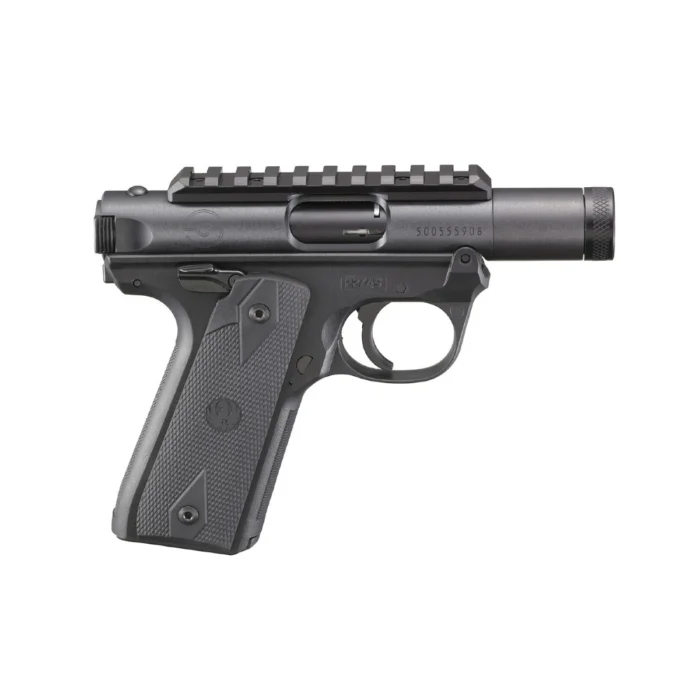
Ratings (out of five stars):
Overall * * * *
Absolutely awesome! More fun than a barrel of monkeys! All I’d perhaps change to bump this bad boy up to a 5-star gun is a little more custom work. Given that it’s a Silencer Shop exclusive item it would be cool to see things like custom grip panels, a more tactical style charging handle and magazine release, and maybe a unique trigger shoe style. Heck, a combo deal with a silencer including custom Cerakote on everything would be slick! All things an SSH owner can do on their own, but it’s a cool and specific, unique pistol that I feel could have taken that theme a little further.

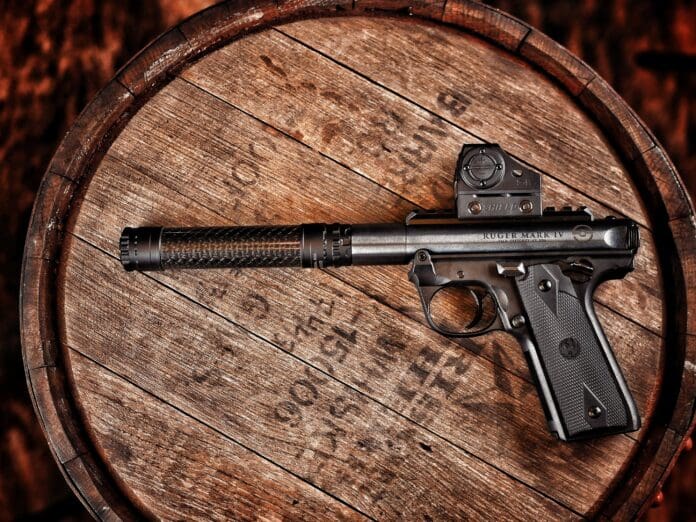
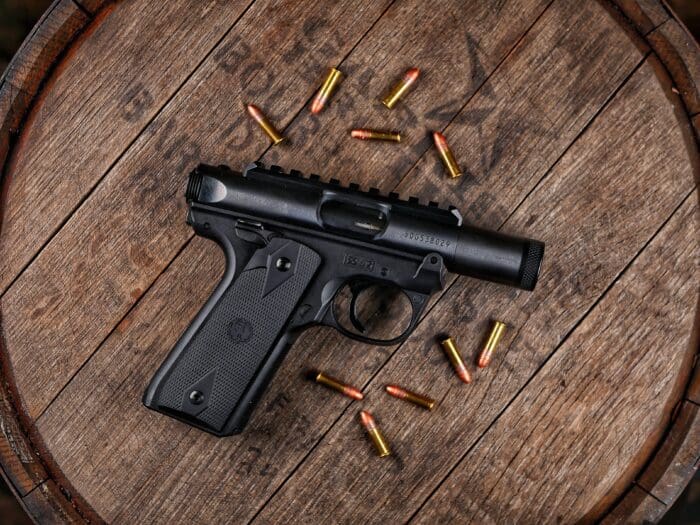
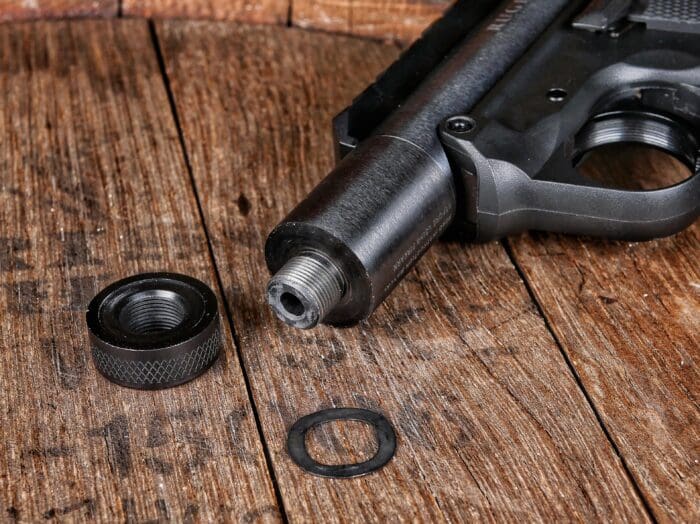
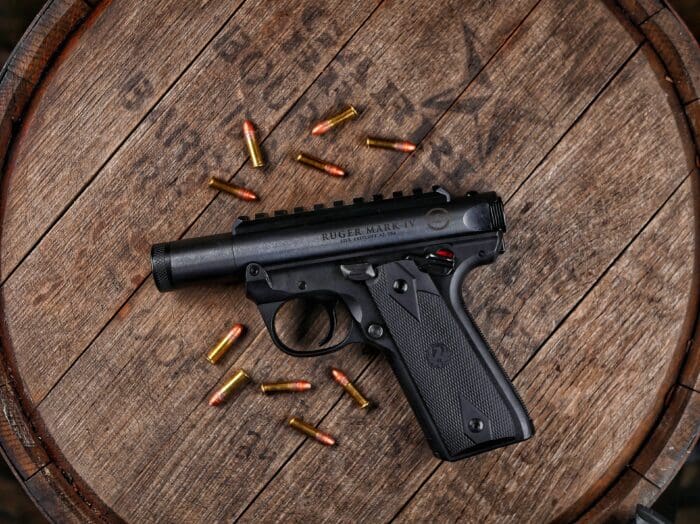
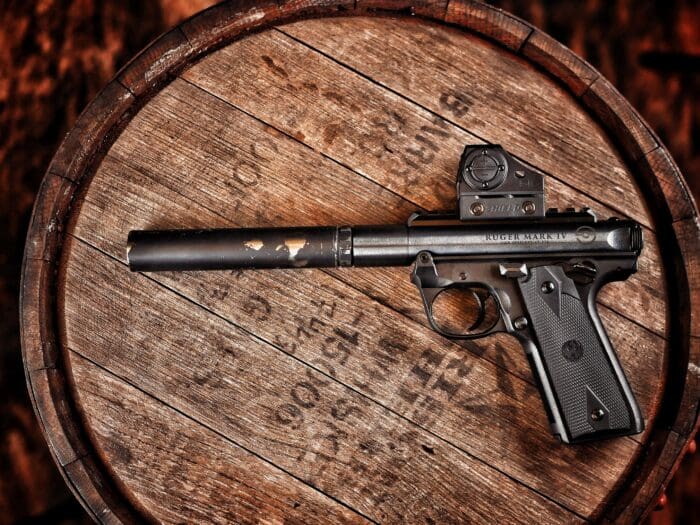

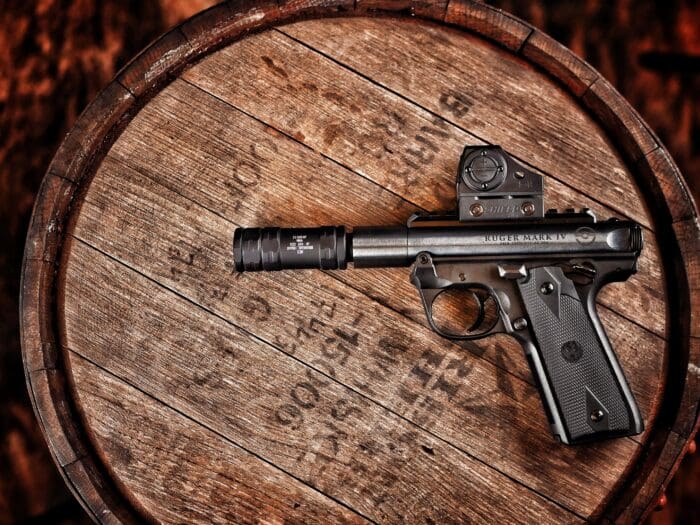

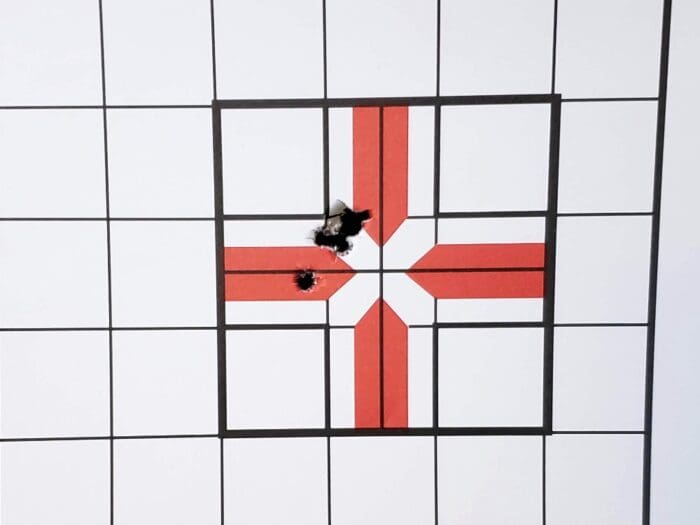
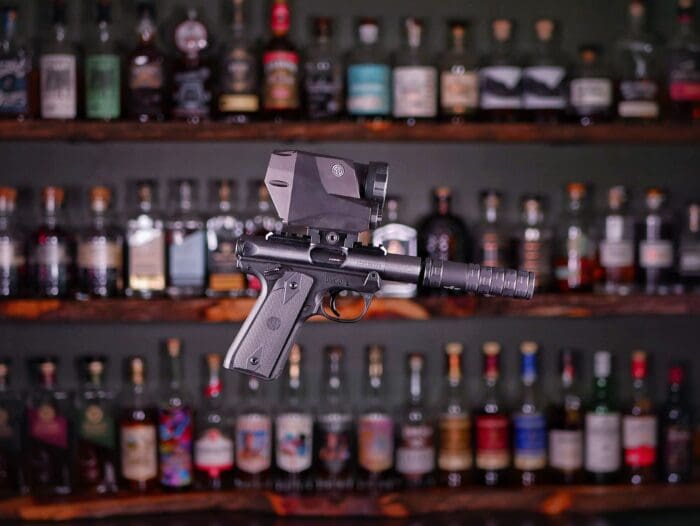



Well, I have been on the fence for several years about purchasing a suppressor. I am now at the point where there is a better than 50% probability that I will dive into the suppressor arena this summer.
The only serious question at this point is what caliber or calibers? It seems like a no-brainer that I should own a suppressor for .22 LR (although I do not have a single firearm chambered in .22 LR which has a threaded barrel–that is another problem that I have to solve).
I am also leaning heavily toward purchasing a .45 caliber suppressor which would enable me to shoot my rifle (chambered in .44 Magnum) suppressed for white-tailed deer hunting. Of course I could also use that same .45 caliber suppressor on any other rifle that I own with only a tiny (bordering on negligible) increase in sound-pressure–even on a caliber as small as 5.56x45mm NATO.
“(although I do not have a single firearm chambered in .22 LR which has a threaded barrel–that is another problem that I have to solve).”
For about a hundred bucks you can get a gun properly threaded by a qualified ‘smith.
As for your second caliber, that’s gonna be up to you. I’m leaning towards a .30 cal can for my .300 BLK AR-pattern build currently in progress, but eventually will need one in .45 ACP as well…
Geoff,
Yeah, I am already figuring on the extra expense of paying a gunsmith to thread a barrel–probably on my rifle chambered in .22 LR. If a gunsmith will do that for $100, I will be satisfied.
My rifle chambered in .44 Magnum does not have a threaded barrel either. So that would be another $100 for a gunsmith to work their magic.
At that point, I would be looking at $200 for one tax stamp, $200 for another tax stamp, $200 for a gunsmith, probably at least $300 for a rimfire suppressor, and probably another $700 for a .45 caliber (rifle-rated) suppressor. That is a total of $1600 which is kind of hard to swallow.
If push comes to shove and I can only justify one suppressor, I will probably go with the .45 caliber suppressor since .22 LR is already somewhat on the quiet side, comparatively speaking.
Regarding possibly nixing a rimfire suppressor for .22 LR, something just occurred to me after I stated that, “.22 LR is already somewhat on the quiet side.”
I know that my .44 Magnum rifle is surprisingly quiet–nowhere near as loud as a .44 Magnum revolver–due to the long barrel. Why? Answer: that cartridge is intended for revolvers, thus the powder burns pretty fast and pressure is pretty low by the time the bullet leaves the 20 inch long barrel. And that low pressure translates to a substantial decrease in sound-pressure level as the bullet exits. Hence it is much quieter than a 4-inch revolver barrel.
Well, I am thinking that the same principle would apply to .22 LR shot out of a rifle barrel. And the report of a shot would have to be even lower if I shot sub-sonic ammunition since the supersonic crack of standard and high-velocity .22 LR contributes significantly to the overall sound level.
Now I have to think about it this way: how much sub-sonic .22 LR ammunition can I buy–versus standard or high-velocity bulk ammunition–with that total cost of $600 that I would spend on a rimfire suppressor? And note that my “break even point” has to correspond to the cost difference between subsonic and standard/high-velocity ammunition.
For example, let’s say that subsonic .22 LR ammunition is 9-cents per round and standard/high velocity .22 LR ammunition is 5-cents per round. That is a cost difference of 4-cents per round. If $600 is my break-even point, that corresponds to $600 / 4-cents per round == 15,000 rounds of subsonic .22 LR ammunition!
And that example does not account for the hassle (and travel expense) of purchasing a rimfire suppressor, the hassle (and travel expense) of having a gunsmith thread my barrel, and the hassle (and expense of some cleaning system) of cleaning a suppressor a bazillion times (since rimfire ammunition is filthy).
I think I just talked myself out of purchasing a rimfire suppressor.
Also, while it won’t be quite as quiet (or light or compact), there’s nothing stopping you from putting your centerfire suppressor on your .22.
@uncommon_sense
Not all .45 cal suppressors are rated for rifle calibers. Most rifle rated cans also have minimum barrel length restrictions.
@Umm . . .
It might be a good idea to have a dedicated .22 lr can so you don’t dirty up your more expensive rifle suppressor.
Dude,
I’ve read a few places that firing centerfire through a suppressor that’s become [reasonably] dirty from rimfire shooting blasts most of the gunk out, but I haven’t done enough to know for sure. I’m thinking about getting a dedicated rimfire can anyway, just because my CF can is disproportionately large on my otherwise extremely handy .22 host. I do always welcome advice from you more experienced guys.
The only part that is REAALY “hard to swallow” is the demtard FDR NFA/Unconstitutional “tax stamp” BS.
“I’m thinking about getting a dedicated rimfire can anyway, just because my CF can is disproportionately large on my otherwise extremely handy .22 host.”
Get a can that can handle a long soak in a corrosive liquid, so no aluminum…
Geoff,
Good advice, thanks! Do you have any recommendations that meet that criterion, while also being light, compact, and reasonably priced?
.22Short is quiet out of a rifle barrel
And 22 CB ‘caps’ are even quieter, being nothing but rimfire primer as the propellant…
my AR-15…with a .22 conversion kit and a .45 “can” makes absolutely no sound at all!…sounds like you’re dry firing the gun with the audible “click”…suppose I could get my Ruger pistol threaded…just don’t like messing with the appearance of the gun..that little MKII will empty out 11rds so fast you can’t hear the individual reports…no wonder it was a mob favorite!
Can anyone who’s handled both comment on how this stacks up against the Volquartsen Mini Mamba? Price is clearly in the SSH’s favor, but what about other factors?
My first experience with suppressors was in the military. That was a long time ago. I thought they were cool/fun. I still do. Not interested in owning one, but friends do. When we had a hog problem on the farm we had live traps running. They have to be checked daily. I would take Casey’s suppressed Ruger out of the safe at the hunting camp to dispatch the hogs. It was kept loaded with Remington sub-sonic HP. I don’t remember how long the barrel is, but it was very short. Often, on mature hogs, the bullet would fail to penetrate the skull. Remember that if you plan on doing anything other than punching paper. As an aside, never had the same problem with the suppressed 10/22. Same ammo.
This would be nice you’d probably be able to run almost any common 22lr and not need subsonics to get subsonic velocities. I still kind of wonder why you just wouldn’t do an integral though, it seems kind of like a functional redundancy unless you’re flexing one can to multiple guns.
I may be missing something (I’m fairly new to suppressors), but I don’t see a lot of redundancy beyond one male and one female set of threads. To me the redundancy is on many integrally suppressed guns that use a much longer barrel than needed for stabilization, then port it to attain a velocity equivalent to a 3″ barrel. Everything is a tradeoff until it isn’t.
Besides the ability (as you noted) for one can to serve multiple hosts, it’s also easier on many guns to remove the suppressor than the barrel for cleaning.
had some bad experiences with sub-sonic 9mm…[rd not leaving the barrel]….made me leery
When I can walk in gunmshop and buy suppressors and the only paperwork is counting the cash then I’ll be interested in owning one. $200 tax stamp, fingerprints, blah blah. = Feed the Beast
HUH?!?
Needing governments permission.
SAY AGAIN? I COULN’T HEAR YOU.
I NEVER FOUND A NEED FOR SUPRESSORS ANYWAY.
Can you just buy the upper with stub barrel? I already have a Ruger mark iv 22/45.
Regrettably, the upper is the serialized part on any Ruger Mark pistol. Why this makes the uppers commonly available and the grip frame cost as much as a whole gun, I don’t know. Regardless, any upper would have to go through an FFL, like a Glock grip frame.
Hmm… well it does have an extra quarter inch of barrel over my LCPII…
Hush lil puppy.
Baby shoes.
I hardly ever shoot .22’s anymore. During one of the ammo shortages I bought a couple of pellet guns and haven’t looked back. Mostly I keep the .22’s in holding for the grand kids.
I guess I’m the only whi thinks this looks like a cool pocket pistol without the suppressor. Probably won’t buy one unless I decide to get a suppressor, and I have plenty of threaded barrels already.
I had considered getting into suppressors for a while, just never did it. But now with the brace thing I am not sure I want to do anything that has to be registered.
In fact with recent developments (IRS siezing 4473s) I am not inclined to do anything requiring any paperwork at this point.
I agree with possum.
Volquartsen sells MK IV barrels/uppers for $15 each when you buy a batch of ten (with sights). They don’t use them so they dump them pretty cheap. My brother in law has a lathe and a milling machine. I’m having him cut and thread the barrels to different lengths to see what works best. MK IV lowers are cheap if you find them on sale, I’ve bought a couple for <$300.
Comments are closed.